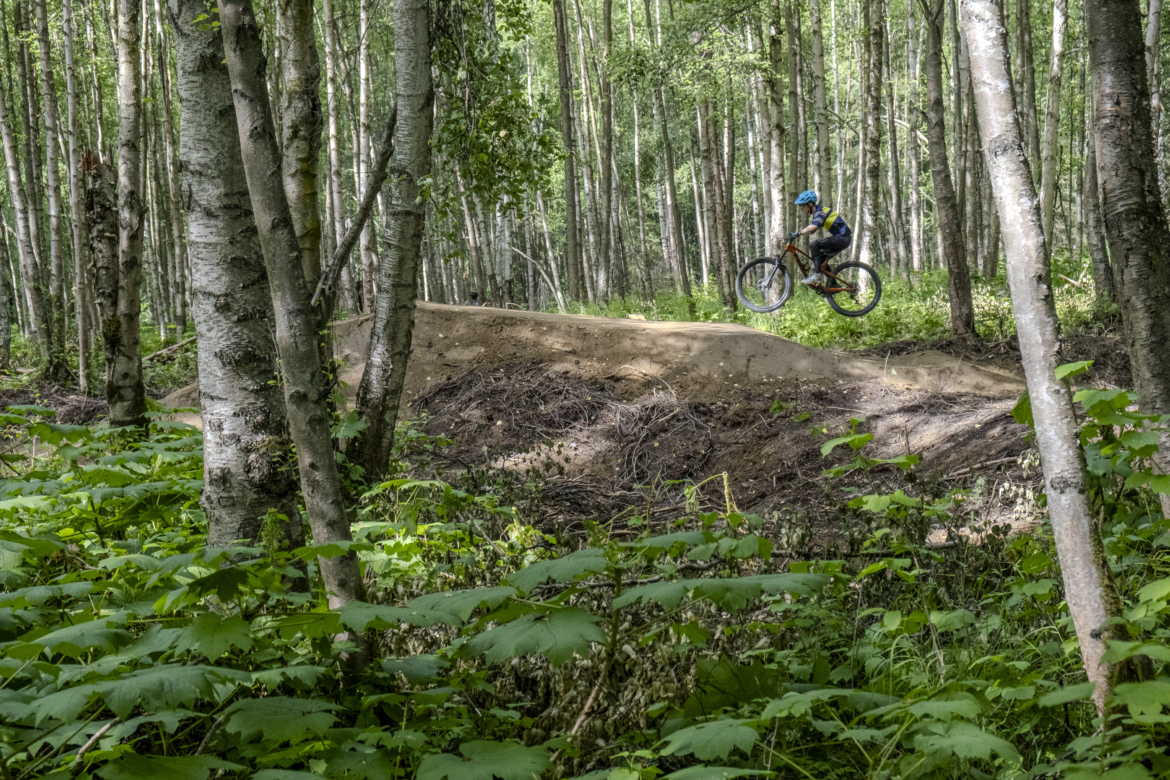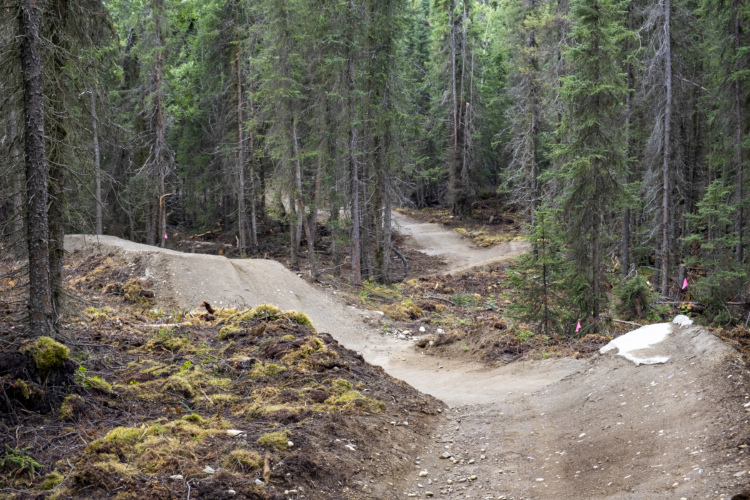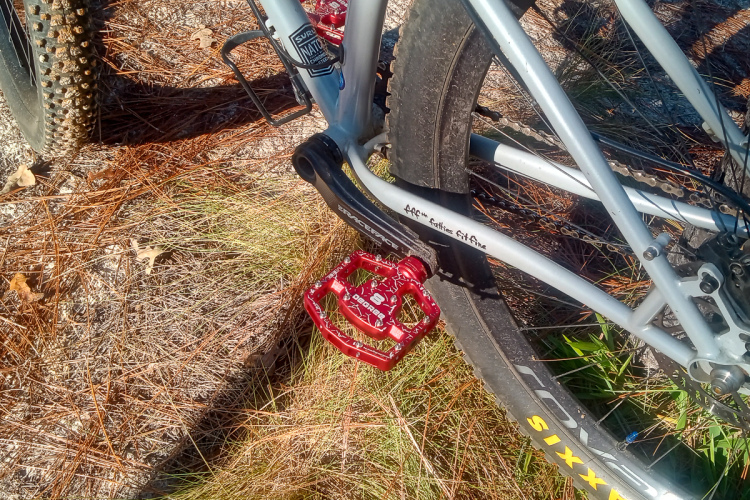
Russian Jack Springs Park is embedded in the northeastern corner of the city of Anchorage, Alaska. The city’s east side is considered “a rougher part of town” and “has had a notorious reputation,” according to Carl Battreall, Project Manager for Alaska Trails. Some of that notorious reputation is due to Russian Jack himself.
The park is named after a Russian bootlegger and squatter who lived in the area. Russian Jack distilled moonshine during prohibition, and to sneak the liquor into the city, he would hire women to hide it in their baby buggies and push it into town. “Then he eventually went to jail for murder,” said Battreall. Even to this day, the park is named after him, as is a school and a few other notable places around town.
In recent years, the park’s reputation hasn’t been any better. “It was a place that no one ever wanted to go to,” said Battreall. “It was like a scary part of town, the park — it had so much trash and disgusting things.” This “notorious park was known for crime, for drugs, and prostitutes — just illegal stuff. None of our kids and nobody ever wanted to go into [the park].”
But today, Russian Jack Springs Park is home to Alaska’s newest mountain bike trail system, with progressive jump lines and tech trails designed for locals — and especially kids.
How did this radical transformation take place?


From prostitution to jump trails.
Two local riders — Carl Battreall and Steve Cleary — were both raising families in east Anchorage, and they came up with the idea to turn this notorious park into a community asset by building mountain bike trails. Carl Battreall is both the Project Manager for the Russian Jack Springs project for Alaska Trails and the Trail Manager for Singletrack Advocates, the local mountain bike advocacy group. Steve Cleary is the Executive Director of the nonprofit Alaska Trails.
Originally, the duo faced substantial opposition because no trails in this area were included the city’s master plan. While it took years to achieve, their true power move was to get mountain bike trails added to the master plan as a part of a greater revision process that the city was conducting. Once that was achieved, “essentially no one could shut them down,” said Battreall.
Once the trails were on the master plan, “I said, ‘Steve, can I just go for this?'” Alaska Trails is an advocacy and trail building organization, but they focus primarily on multi-use trails, like the Alaska Long Trail. This was the first mountain bike-specific project that Alaska Trails had ever done, but Battreall was willing to head it up — so Cleary and Alaska Trails agreed to back the project.
They then began the process of raising community support and fundraising for the trail build. Together they raised $215,000 through three grants — a state RTP grant, a grant from the Anchorage Park Foundation, and a third from a local youth biking program known as “Mighty Bike.”

The skinny on the new dirt.
Once funding was secured, Battreall got in the machine and got to work. In total, Battreall (along with 122 hours of volunteer labor) built five downhill lines in Russian Jack Springs Park, along with an XC loop on top of the hill and a climbing route to ascend the ~300 vertical feet. In total, Russian Jack Springs Park is home to three miles of brand-new singletrack.
The single climbing route and five downhill routes form a bike park-style layout. The downhill trails offer a wide range of different styles to choose from, including “a tech trail, jump trails, a variety of trails, and then a few other outside loops, and some drop options and things like that,” said Battreall. The tech trail was hand-built to give it a raw flavor. As for the jump trails, there are three jump lines, each with its own character. Riders will find “a green beginner jump line, a bigger intermediate jump line, and then a jump line that has mostly just shark fins and all kinds of crazy like different angles for people who like to jib off things and do it differently.” Finally, there’s a downhill line with some jumps and a few climbs mixed in that provides a more cross-country flavor.



More trails close to home.
The new trail system at Russian Jack Springs is yet another classic example of a trend sweeping the nation of building “more trails close to home.” Before the construction of this new network, riders living on the east side would have to get in their cars to drive to either Hillside Park or Kincaid Park to mountain bike.
Well, technically “you can actually ride to them via paved path, but you’re talking a 15-mile paved path, before you can even mountain bike,” said Beattrell. But this new trail system is within easy riding distance of many Anchorage residents — including plenty of kids.
“If you draw a radius around this park of about a mile or so, there’s more than a dozen schools right in the area,” said Cleary in an article on AlaskaPublic.org. “So we really hope it’ll be someplace where young people can learn how to ride better and have fun right in their own neighborhood.”

Phase 2, coming next year.
In an interesting twist of fate, the city of Anchorage also applied for its own grants to rehabilitate the entirety of Russian Jack Springs Park — not to just build mountain bike trails. $200,000 was penciled into that grant for mountain bike trail construction, and the municipality just recently received word that the grant was approved. Now, Battreall has another $200K in funding to work with to build Phase 2.
“The interesting thing is that the area that was approved for trails in the master plan is really small,” said Battreall. “And so we’re trying to think of, ‘how can we be creative? What’s missing in the whole Anchorage community? What type of trails are missing?’ So we’re thinking of building a dual slalom — like a true dual slalom — so then we can have a race every year that can possibly be used as a fundraiser for maintenance. And then there are some requests for harder jump lines, like a black, legitimate jump line. There’s a lot of different things, but we have a limited space, so we have to be kind of creative about what we’re going to build.”











2 Comments
Jul 19, 2024
Jul 19, 2024